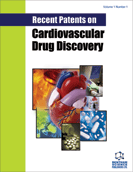Abstract
Stroke is one of the leading causes of disability and death worldwide and is a more common cause of cardiovascular morbidity and mortality than myocardial infarction among patients with hypertension. Identifying and modifying key risk factors is crucial to reduce morbidity and mortality from stroke. Hypertension is the most important modifiable risk factor for ischemic stroke, and antihypertensive treatment is of paramount importance to reduce the incidence of stroke mortality and morbidity. Perindopril is a third-generation long acting, once-daily lipophilic angiotensin-converting enzyme inhibitor with high tissue angiotensin-converting enzyme affinity, lowering angiotensin II and potentiating bradykinin. Its efficacy, safety and tolerability are well established in the treatment of hypertension and heart failure. The purpose of this article is to review the evidence from clinical trials as well as from recent patents that has been gathered in regard to perindopril, demonstrating not only its efficacy in reducing blood pressure, but also to other cardiovascular protective properties that act in addition to the obvious blood-pressure-lowering effect in the prevention of stroke in patients with essential hypertension, with particular attention paid to the results from the Perindopril Protection Against Recurrent Stroke Study (PROGRESS).
Keywords: Perindopril, stroke, prevention, hypertension
 2
2


